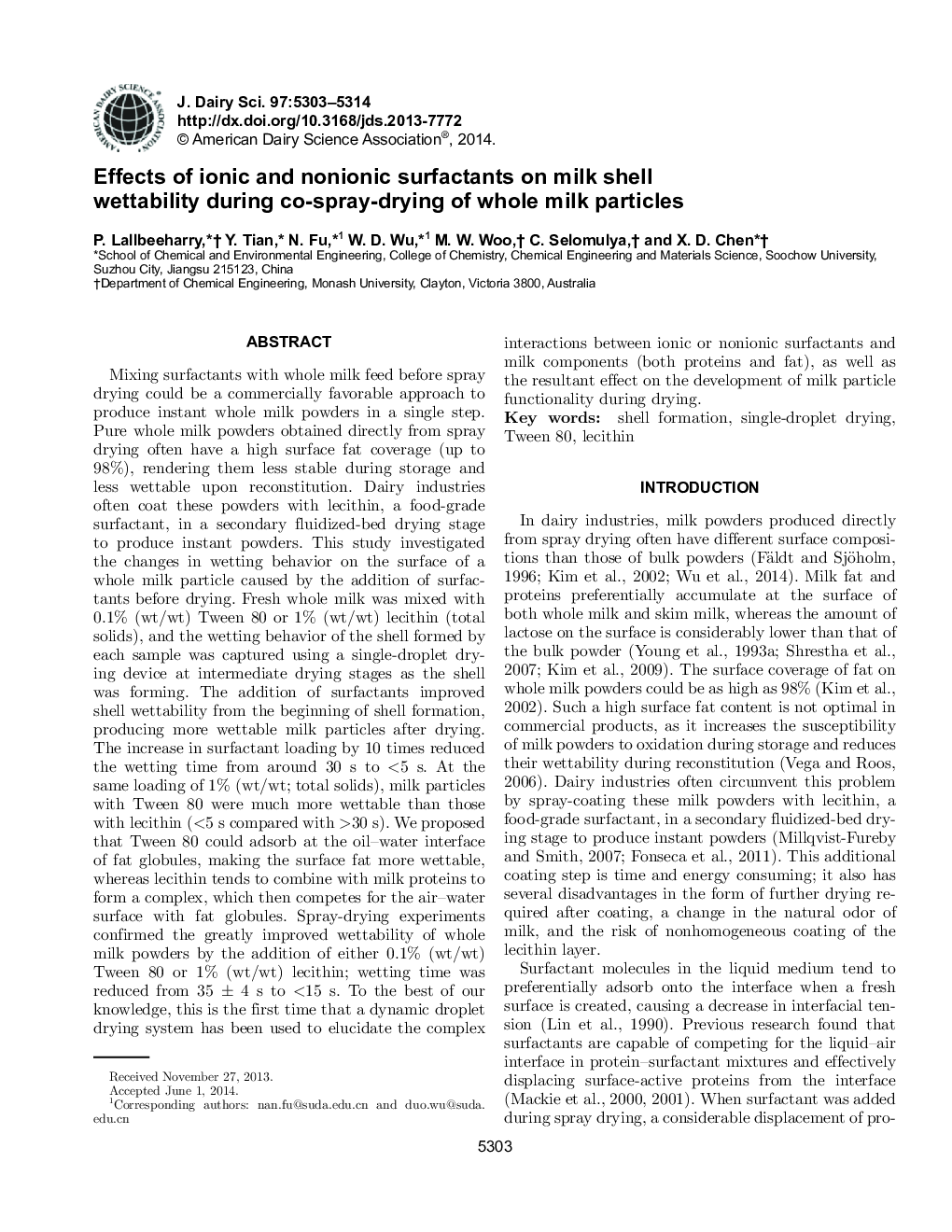| Article ID | Journal | Published Year | Pages | File Type |
|---|---|---|---|---|
| 10974086 | Journal of Dairy Science | 2014 | 12 Pages |
Abstract
Mixing surfactants with whole milk feed before spray drying could be a commercially favorable approach to produce instant whole milk powders in a single step. Pure whole milk powders obtained directly from spray drying often have a high surface fat coverage (up to 98%), rendering them less stable during storage and less wettable upon reconstitution. Dairy industries often coat these powders with lecithin, a food-grade surfactant, in a secondary fluidized-bed drying stage to produce instant powders. This study investigated the changes in wetting behavior on the surface of a whole milk particle caused by the addition of surfactants before drying. Fresh whole milk was mixed with 0.1% (wt/wt) Tween 80 or 1% (wt/wt) lecithin (total solids), and the wetting behavior of the shell formed by each sample was captured using a single-droplet drying device at intermediate drying stages as the shell was forming. The addition of surfactants improved shell wettability from the beginning of shell formation, producing more wettable milk particles after drying. The increase in surfactant loading by 10 times reduced the wetting time from around 30 s to <5 s. At the same loading of 1% (wt/wt; total solids), milk particles with Tween 80 were much more wettable than those with lecithin (<5 s compared with >30 s). We proposed that Tween 80 could adsorb at the oil-water interface of fat globules, making the surface fat more wettable, whereas lecithin tends to combine with milk proteins to form a complex, which then competes for the air-water surface with fat globules. Spray-drying experiments confirmed the greatly improved wettability of whole milk powders by the addition of either 0.1% (wt/wt) Tween 80 or 1% (wt/wt) lecithin; wetting time was reduced from 35 ± 4 s to <15 s. To the best of our knowledge, this is the first time that a dynamic droplet drying system has been used to elucidate the complex interactions between ionic or nonionic surfactants and milk components (both proteins and fat), as well as the resultant effect on the development of milk particle functionality during drying.
Keywords
Related Topics
Life Sciences
Agricultural and Biological Sciences
Animal Science and Zoology
Authors
P. Lallbeeharry, Y. Tian, N. Fu, W.D. Wu, M.W. Woo, C. Selomulya, X.D. Chen,
